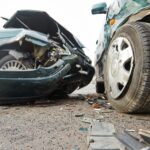
Car accidents can be overwhelming, and navigating the complexities of insurance claims adds another layer of stress. Unlike some states, California follows a fault-based system for car accidents, which directly impacts how claims are handled. Understanding this system is crucial for anyone involved in an accident, as it influences who pays for damages and how compensation is determined.
What Is a Fault-Based System?
In a fault-based, or tort, system, the party responsible for causing the accident is liable for the resulting damages. This is in contrast to a no-fault system, where each party’s own insurance covers their losses regardless of who caused the accident.
Determining Fault
After an accident, insurance companies will investigate to determine who is at fault. This process involves reviewing evidence such as police reports, witness statements, and photographs of the scene. The determination of fault can be straightforward in some cases but may be complex in others, particularly if multiple parties are involved or if fault is disputed.
Impact on Car Accident Claims
- Filing a Claim
In California, if you are injured in a car accident and believe the other driver is at fault, you can file a claim with their insurance company. This is known as a third-party claim. Alternatively, you can file a claim with your own insurance company, which will then seek reimbursement from the at-fault driver’s insurer. This is typically done under the collision coverage of your policy.
- Compensation for Damages
Compensation in a fault-based system covers a broad range of damages, including:
- Medical expenses
- Property damage
- Lost wages
- Pain and suffering
The at-fault driver’s insurance is responsible for covering these costs up to the policy limits. If damages exceed these limits, the injured party may need to seek additional compensation through a lawsuit.
- Comparative Negligence
California follows a “pure comparative negligence” rule. This means that if you are partially at fault for the accident, your compensation will be reduced by your percentage of fault. For example, if you are found to be 20% at fault for the accident and your damages total $10,000, you would receive $8,000 (80% of the total damages).
- Uninsured/Underinsured Motorist Coverage
Despite the requirement for all drivers to carry insurance, some may be uninsured or underinsured. In such cases, your own uninsured/underinsured motorist coverage can help cover your damages. It’s advisable to carry this coverage to protect yourself against such scenarios.
Steps to Take After an Accident
To protect your rights and ensure a smooth claims process, follow these steps after a car accident:
- Call the Police: Always report the accident to the police, and obtain a copy of the police report.
- Exchange Information: Collect the other driver’s insurance information, contact details, and vehicle information.
- Document the Scene: Take photos of the accident scene, vehicle damage, and any visible injuries.
- Seek Medical Attention: Get a medical evaluation as soon as possible, even if you feel fine initially.
- Notify Your Insurance Company: Report the accident to your insurer promptly.
- Consult an Attorney: If you have significant damages or if fault is disputed, consider consulting a personal injury attorney to protect your interests.
Conclusion
California’s fault-based system for car accidents means that the at-fault party is responsible for covering damages. Understanding how this system works is essential for navigating the claims process and ensuring you receive the compensation you deserve. Always take the necessary steps after an accident to protect your rights and seek professional advice if needed.
- How Settlement Values Are Determined in California Personal Injury Cases - April 9, 2025
- How Can Evidence Be Preserved After a Personal Injury Accident - April 2, 2025
- How Do Emotional Distress Claims Work In Personal Injury Cases? - March 20, 2025